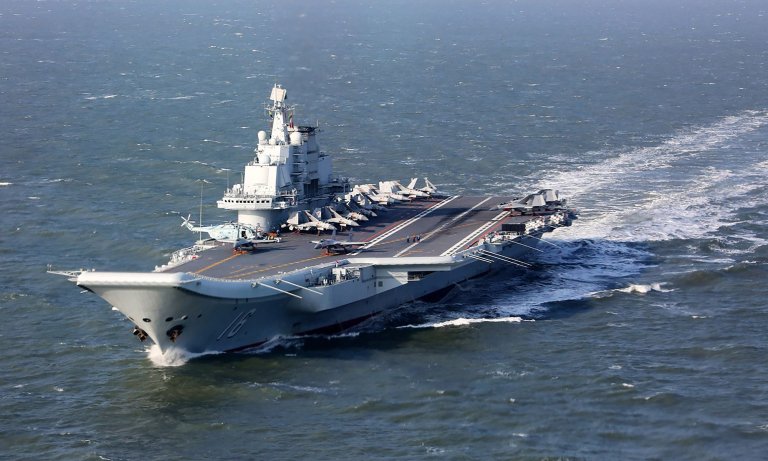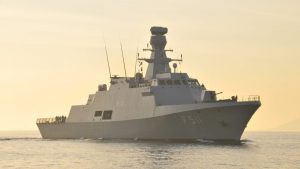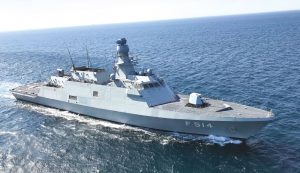You are familiar with floating casinos. They are typically modified versions of antique riverboats. But what if I told you that the Chinese had devised a complex ploy involving a casino and an aircraft carrier?

They have an obsolete Soviet aircraft carrier purchased by a private investor. The Ukrainians were assured by this individual that he would turn it into a casino. Then, that ageing ship was converted into the first aircraft carrier for the Chinese navy. Here are some additional specifics concerning this improbable tale.
The story begins in 1985, when the keel of the Soviet aircraft carrier Riga was laid in Nikolayev. Riga was only partially built when it was launched in 1988; just the ship’s structure was complete. It was still necessary to establish the electrical system. In 1990, the Soviets gave it the new name of Varyag. By 1992, Russian shipyards had ceased operations, and the carrier was sent to Ukraine incomplete.
The ship was then ransacked and eaten. In 1998, it lacked an engine, a rudder, and weaponslacked an engine, a rudder, and weapons. It was in terrible shape and a wreck. The shipyard had extra building materials, and Ukraine was considering selling the rotting vessel. Many nations, especially China, scoffed at the idea.
However, China was actually planning a complicated purchase of it. To avoid escalating tensions with the West and maintain its “peaceful ascent” without a sizable naval buildup, the leadership intended to keep the acquisition a secret.
A businessman and former Chinese basketball star called Xu Zengping was willing to be approached by a few officers and at least one general of the People’s Liberation Army. They explained the strategy to Xu. He was supposed to portray a businessman who wanted to purchase the ship so that his people might bet on it in Macau. Later, the Chinese navy would seize control of it and prepare it to serve as the nation’s first aircraft carrier.
Maybe this complex scheme will succeed. Because the Chinese had already carried out something comparable, it was only somewhat credible. Old Kiev-class carriers from the Soviet period were purchased and converted into entertainment hubs for hotels and video arcades.
Xu was intrigued by the cloak and dagger element of the scheme and was patriotic enough to see the necessity for an aircraft carrier for his nation. He established a fictitious firm with a Macau base using a $30 million loan from a buddy. In 1998, Xu went to the shipyard and began haggling with the workers. He reached an agreement after four days of drunken discussions. The cost of the carrier was just $20 million, not $20 billion. Even though the ship was in terrible shape, this was still a great deal.
At Jane’s military magazine, one Westerner observed the deal but took it at face value. The ship’s condition made it unlikely that it could be made combat-ready.
By 2000, the ship was prepared for the voyage back to China. The owners also included a tonne of drawings and the engines. A Dutch boat was organised by Xu to tow the ship. Prior to the actual journey, everything went as planned, but due to the Turkish government’s mistaken belief that the ship would become caught in the Bosporus straits, the ship was left stranded for approximately 500 days outside of Istanbul.
Over the course of 16 months, Xu had to spend $8,500 every day on towing expenses as a result of this mysterious project’s high cost. The Chinese authorities saw that they had no choice but to take formal action and ask the Turks to permit passage. A Portuguese sailor who was helping with the towing was killed in a tropical storm when a rope snapped while carrying the ship. After that, the ship had to circumnavigate Africa. The future carrier arrived in China in 2002. By 2005, it had been docked in drydock for an extended refit to become the Liaoning.
How about Xu? by taking advantage of him, the Chinese authorities. They sent him a $120 million bill, which he is probably still paying. However, the initial $20 million investment paid off handsomely for the People’s Liberation Army Navy. The Liaoning finally became a functional carrier thanks to the PLAN.
Author Biography: Dr. Brent M. Eastwood is the editor of 1945’s defence and national security section and the writer of Humans, Machines, and Data: Future Trends in Warfare. He is a former U.S. Army infantry officer and a specialist on emerging threats. Follow him on Twitter by typing in @BMEastwood. He has a doctorate in both political science and international relations.





